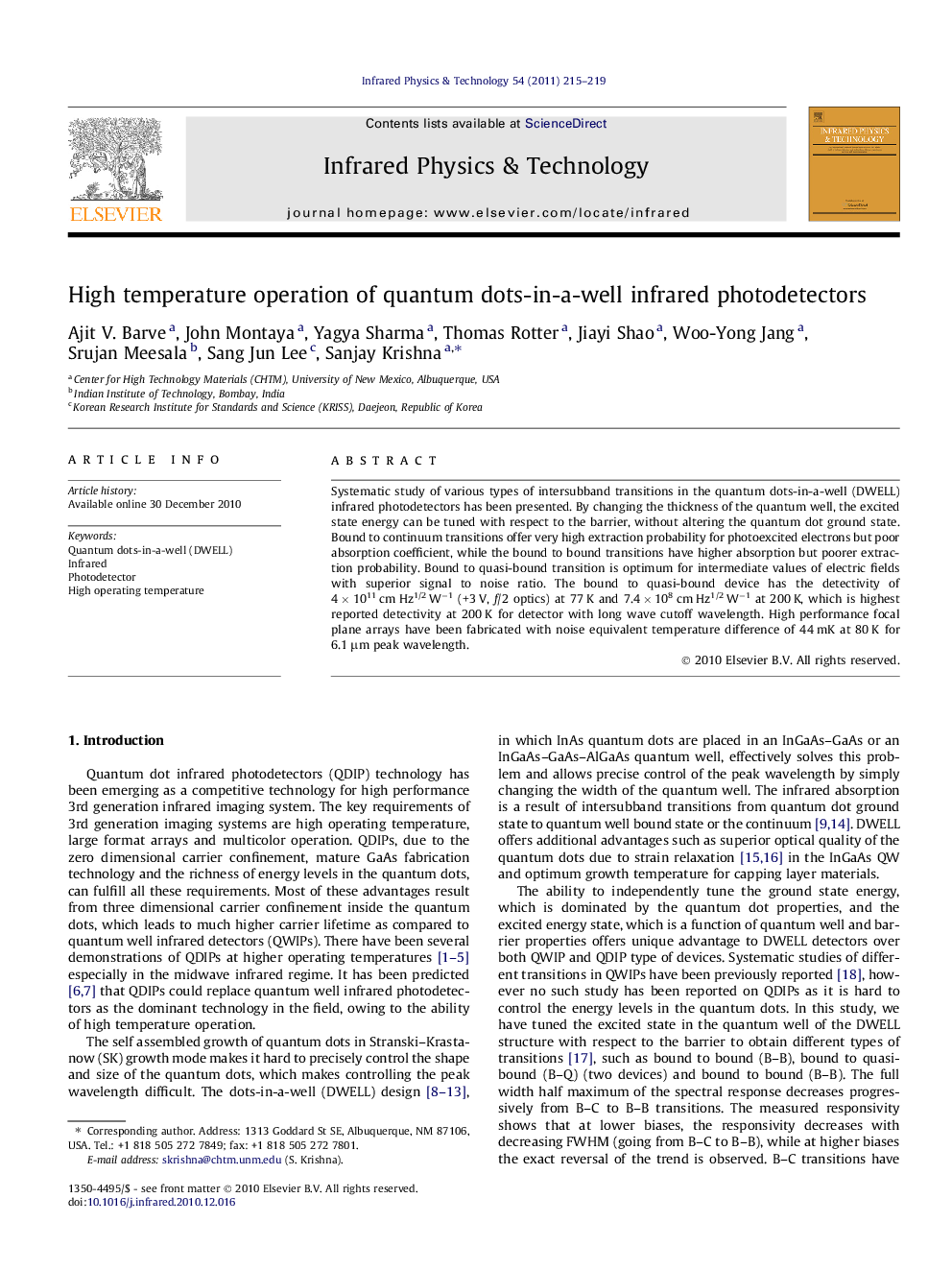| Article ID | Journal | Published Year | Pages | File Type |
|---|---|---|---|---|
| 1784730 | Infrared Physics & Technology | 2011 | 5 Pages |
Abstract
Systematic study of various types of intersubband transitions in the quantum dots-in-a-well (DWELL) infrared photodetectors has been presented. By changing the thickness of the quantum well, the excited state energy can be tuned with respect to the barrier, without altering the quantum dot ground state. Bound to continuum transitions offer very high extraction probability for photoexcited electrons but poor absorption coefficient, while the bound to bound transitions have higher absorption but poorer extraction probability. Bound to quasi-bound transition is optimum for intermediate values of electric fields with superior signal to noise ratio. The bound to quasi-bound device has the detectivity of 4 Ã 1011 cm Hz1/2 Wâ1 (+3 V, f/2 optics) at 77 K and 7.4 Ã 108 cm Hz1/2 Wâ1 at 200 K, which is highest reported detectivity at 200 K for detector with long wave cutoff wavelength. High performance focal plane arrays have been fabricated with noise equivalent temperature difference of 44 mK at 80 K for 6.1 μm peak wavelength.
Related Topics
Physical Sciences and Engineering
Physics and Astronomy
Atomic and Molecular Physics, and Optics
Authors
Ajit V. Barve, John Montaya, Yagya Sharma, Thomas Rotter, Jiayi Shao, Woo-Yong Jang, Srujan Meesala, Sang Jun Lee, Sanjay Krishna,
